
Maru García with her piece “Boiling Rock 3” (2024). (Photo credit to Eric Jaipal)
“Sinks: Places We Call Home,”which features artists Maru García and Beatriz Jaramillo, captures the long-term effects of pollution on communities of color in Southeast Los Angeles.
The exhibition is presented by Self Help Graphics & Art (SHG) and curated by Marvella Muro and community members.
“We want to give [the community] hope and remind them of what belongs to them,” Jaramillo told CALÓ News.
On exhibit at the Luckman Fine Arts Complex’s Gallery at California State University, Los Angeles (CSULA) until February 15, 2025, “Sinks” is a part of PST: Art & Science Collide, a Getty initiative meant to address the most urgent problems of our time by exploring past and present connections between art and science through exhibitions, public programs and other resources.
Specifically, the exhibition focuses on the ramifications caused by two manufacturing sites near SHG: the former Exide Battery Recycling Facility in Vernon and the former Athens Tank Farm (ExxonMobil Oil Corporation) in Willowbrook. Through painful research and art, García and Jaramillo, along with several other artists, not only lift the veil on the continuous decades-long harm brought to these neighborhoods but also offer resources and information to help empower and heal Angelenos.
“The case studies featured show how Black and Brown communities are linked by environmental injustice and exploitation that, unfortunately, many communities of color across the nation continue to face,” Marvella Muro, Self Help Graphics’ director of artistic programs and “Sinks” curator, stated in a press release. “While the exhibit shows this hard reality, it also uplifts community-driven solutions and provides resources that empower audiences with the tools they can use to stay vigilant, active and engaged to fight against environmental injustice.”

Beatriz Jaramillo with her piece, “In-Between Time” (2024). (Photo credit to Eric Jaipal)
“Sinks” begins before you step foot inside the gallery with a beautifully vivid altar that not only represents the legacy of Día de los Muertos (Day of the Dead) but also the struggles of acquiring green spaces and food access within these communities. SHG thought it was important to open with this piece created by South Central Farm so that those indigenous to the land can see themselves represented in the exhibition, according to Ana Guajardo, SHG curatorial assistant.
Harrowing and meticulously crafted pieces by artists Kim Abeles, Miyo Stevens Gandara, Christian Salcedo Ward, Poli Marichal, Kimiko Miyoshi and Joan Zamora show viewers the ramifications of air pollution on Angelenos.
They also lead you to the first section of the exhibit, a timeline of the unincorporated neighborhood in South L.A., Willowbrook and the long-term effects of stored petroleum products by companies like ExxonMobile. The community went from an agrarian suburb where working-class families grew fruits and vegetables and raised animals in the early 1900s to a community of Black and Brown families of the single family residential development Ujima Village, who would deal with the effects of contamination for decades.
Jaramillo depicts Willowbrook’s dark history through her piece, “In-Between Time,” which invites viewers to walk through time and see the landscape’s transformation between 1938 and 2023 as well as the journey through the 140-acre Earvin “Magic” Johnson Park. On nine white curtains that she screen printed with tar from the La Brea Tar Pits, the artist illustrates the slow spread of contamination throughout the land.
“[Angelenos] have suffered the consequences of contamination and must remember to have hope in the future,” Jaramillo said.
Meant to balance the pain documenting on the curtains, “In-Nature” is a vertical community garden completed by Jaramillo with the help of Angel City Lumber and is meant to shift our relationships with the land we stand on. Created with members participating in Willowbrook Community Garden’s “Urban Garden: Nature, Art and Healing” workshop, it consists of 36 terra cotta planters crafted by Jaramillo, plants grown by the community and a strong Eucalyptus tree branch. In the center is a mirror allowing visitors to reflect on their responsibility to the environment and the generations that will continue after them.
“[We’re] inviting the community to heal through nature and collaboration,” Jaramillo said. “We are nature in human form. If we all understand that, we can all lie harmoniously.”

Marvella Muro, Beatriz Jaramillo and Maru García. (Photo credit to Eric Jaipal)
In collaboration with SHG and the National History Museum of LA County (NHMLA), García founded Prospering backyards (Pb), as part of her andMuro’s examination of Exide’s—a now-shuttered battery recycling facility as of 2015—severe lead contamination and its impact on Southeast L.A. and the surrounding neighborhoods. As one of the most costly environmental cleanups in history, with governmental failures to remediate to this day, García partnered with the NHMLA’s Mineral Science Department to research and use zeolite to capture and reduce lead levels in the soil.
Her work and studies are creatively illustrated in her four-part “Boiling Rock” piece, which begins with a series of mosaic works made up of pellets of collected soil from the yards of 15 community scientists (Southeast L.A. residents who participate in Pb’s Soil Time! workshops and volunteered to be a part of this project) that represent research conducted using zeolites. The second aspect of her piece is a video, a collaboration between García and Dr. Aaron Celestian, curator of the NHMLA mineralogy department, documenting how zeolites capture the lead.
As visitors continue through the open plan gallery, their attention is immediately captured by “Boiling Rock 3,” three six-foot structures composed of clay, mulch, soil and zeolites designed by García to remediate the soil as they disintegrate on contaminated land. Each structure encases a supportive steel pole that, once dissolved, will reveal the words, “Madre,” “Alive” and “Home.”

Día de los Muertos (Day of the Dead) altar provided by South Central Farm. (Photo credit Serena Sanchez)
The final part of the second section of “Sinks” displays scientific research and Pb uniforms along with a collection of serigraph prints that show the test sites of each community scientist’s backyard that have been impacted by lead contamination, depicting the year-long healing and educational relationship between Pb and these residents.
“A lot of Latinos are affected by pollution and we need to learn to act, learn about how we’re exposed and come together and heal,” García said.
“Sinks: Places We Call Home” will be on display until February 15, 2025, at CSULA’s Luckman Fine Arts Complex’s Gallery. A digitally interactive aspect of the exhibition, “After the Rain: A Walking Tour of Magic Johnson Park,” by Jaramillo and SoLa Tech students, allows visitors to learn about the biofiltration system used to capture stormwater and naturally clean the park’s lakes, honoring the people of Ujima Village.

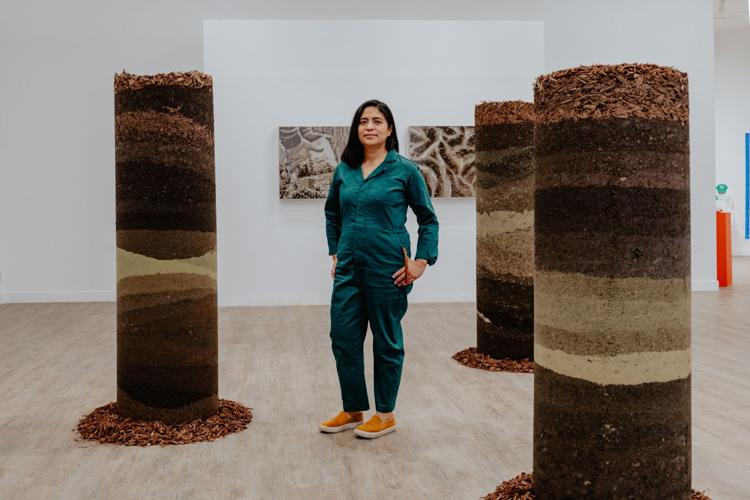
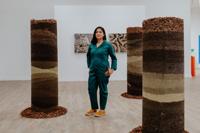
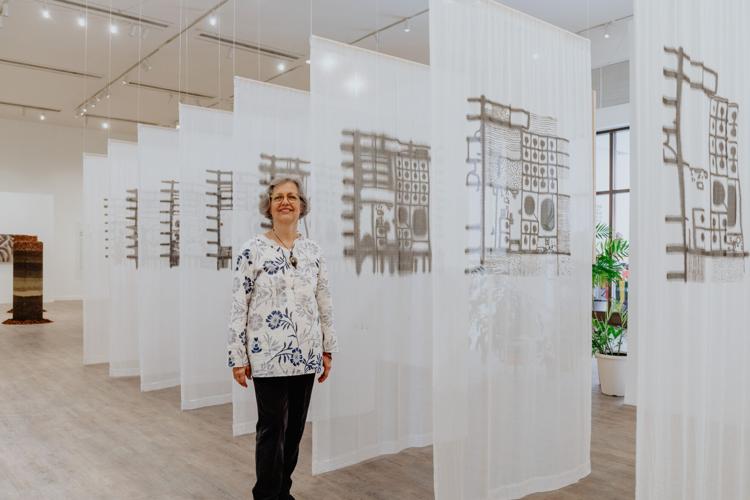




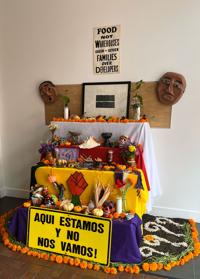



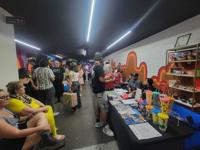




(0) comments
Welcome to the discussion.
Log In
Keep it Clean. Please avoid obscene, vulgar, lewd, racist or sexually-oriented language.
PLEASE TURN OFF YOUR CAPS LOCK.
Don't Threaten. Threats of harming another person will not be tolerated.
Be Truthful. Don't knowingly lie about anyone or anything.
Be Nice. No racism, sexism or any sort of -ism that is degrading to another person.
Be Proactive. Use the 'Report' link on each comment to let us know of abusive posts.
Share with Us. We'd love to hear eyewitness accounts, the history behind an article.